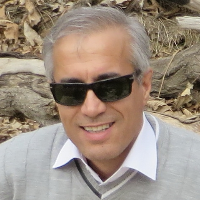The Architect's Social Standing in the Ilkhanid and the Timurid Eras
Author(s):
Abstract:
One of the issues that have been sorely neglected in the historiography of Islamic architecture of Iran is the architects social standing and their role in the construction of architectural monuments. Due to the poor attention paid to the constructional complexities of the process of construction of a work, the works published on Islamic architecture of Iran have failed to reflect all hidden and explicit aspects of this phenomenon. In fact, the negligence regarding the study of buildings, which is the last stage of construction process has caused a number of striking inattentions towards many other relevant and influential issues. Thus, the following questions are raised by the researcher of the history of architecture regarding the historical monument that is the ultimate product of an architectural construction: Which factors and elements have been involved in the construction of the monument? What were the roles of the architect, patrons and erectors? How much freedom does architect had to make decisions for construction affairs? Who were the patrons and erectors of the construction of monuments and what were their responsibilities? All these questions are intended to determine the level of the role and influence of aforementioned factors in an architectural work. According to a number of historical documents, in the Timurid and the Ilkhanid eras the architects and engineers were from the middle class of the society and their profession was considered one of the low level occupations. We can distinguish between four types of architects and engineers who were active in these eras. Every group was in charge of certain affairs: (1) royal architects who performed the orders issued by the court and the governors; (2) guild architects, these architects were active in their hometown and offered services for their fellow citizens; (3) migrant who had emigrated to the capital from other cities (the movement of architects between different areas of the Islamic world); and (4) others, which this group consisted of those who pursued architecture as a secondary work and had other vocations like Quranic sciences or calligraphy or astronomy but they were also working as an architect. The patrons of architecture were from various social classes. The patrons and erectors could be from monarchical and influential families who were affiliated with the progeny of the Prophet Muhammad. They even had affiliations with such mystical initiations as Naqshbandi. These patrons and erectors had various degrees of influence depending on their social and historical context. This paper seeks to cast light on the dark sides and corners of the history of Islamic architecture in Iran through a study of the architecture and its related circles in the Ilkhanid and the Timurid eras. This research seeks to review the features of Islamic architecture of Iran with the hope to take a small step in the direction of this field. First of all we will discuss the types of architects who were active in this historical era, and then we will turn to the role of patrons and erectors.
Keywords:
Language:
Persian
Published:
Journal of Architecture and Urban Planning, Volume:9 Issue: 18, 2017
Pages:
117 to 132
magiran.com/p1715267
دانلود و مطالعه متن این مقاله با یکی از روشهای زیر امکان پذیر است:
اشتراک شخصی
با عضویت و پرداخت آنلاین حق اشتراک یکساله به مبلغ 1,390,000ريال میتوانید 70 عنوان مطلب دانلود کنید!
اشتراک سازمانی
به کتابخانه دانشگاه یا محل کار خود پیشنهاد کنید تا اشتراک سازمانی این پایگاه را برای دسترسی نامحدود همه کاربران به متن مطالب تهیه نمایند!
توجه!
- حق عضویت دریافتی صرف حمایت از نشریات عضو و نگهداری، تکمیل و توسعه مگیران میشود.
- پرداخت حق اشتراک و دانلود مقالات اجازه بازنشر آن در سایر رسانههای چاپی و دیجیتال را به کاربر نمیدهد.
In order to view content subscription is required
Personal subscription
Subscribe magiran.com for 70 € euros via PayPal and download 70 articles during a year.
Organization subscription
Please contact us to subscribe your university or library for unlimited access!



